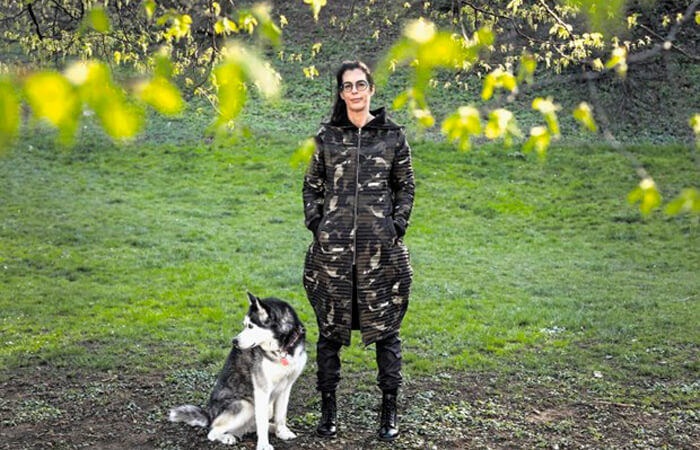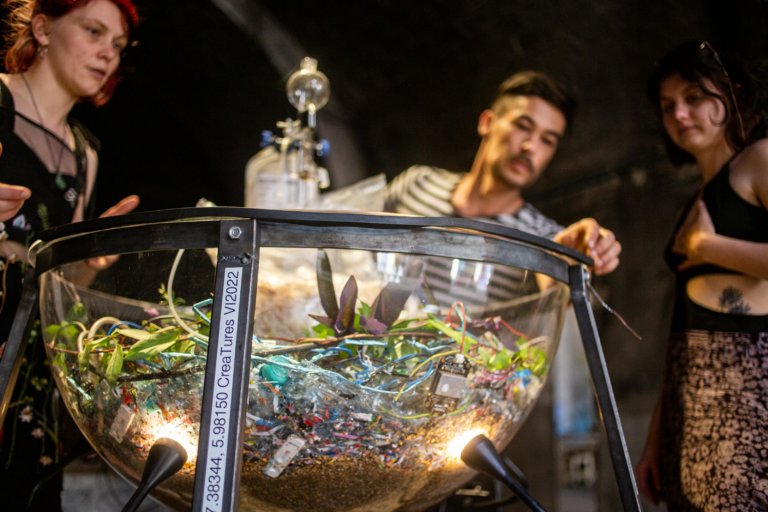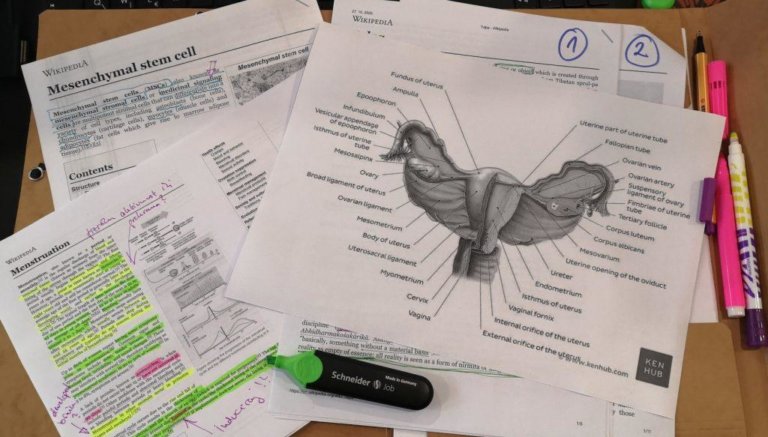Jana Putrle Sridc
New practices require new tools
I would like to summarize a decade of my experience with artistic practices at Kersnikova Institute, as well as my own writing into a few non-binding guidelines for creatives and artists in a futuristic, apocalyptic and dystopian situation. So the first guideline would be to use the tools and protocols you use in your present. So at the moment those are programming cheap electronics, artificial intelligence, genetic tissue engineering, biomaterials, biodesign and so on. I think new practices require new tools, so today’s art practices cannot be invented with old tools like paint and canvas. And my second recommendation would be to deal with the problems of your world using science and technology. So from a creative point of view, these are tools too but they may also offer you a different way of thinking and experiencing the world. And the third recommendation would involve the beings and spaces around you in your creation. So this could be mycelium, artificial intelligence, biological species, biotechnological hybrids, artificial intelligence, landscape; creation is communication, and we need balance among all of those in our sustainable future.
It’s very hard to express all my practice from a decade because I’ve been dealing so much with particular cases of particular artists. But for sure I realize that we need for contemporary world to use contemporary means also in art practices. And it’s like with language. When I write, what I write can be helpful because we are using this language everyday. So when you create in any other art form, this can be helpful if you’re using the language of people around you. So by using something from the past you can’t repair current problems with past tools. This is what I wanted to basically express. Never be afraid of new things, even if you don’t understand them. I’m not an expert on things like CRISPR or biotechnologies, but there are people who know a lot about all this and you can include them in your team and you can try to build an artwork with something you’re really interested in, even if you’re not an expert on that field. You can include people in your project that are experts. I think maybe something I didn’t express in my message in a bottle is to work in a team. I think this is very useful for contemporary art.
We need for contemporary world to use contemporary means
It’s very hard to express all my practice from a decade because I’ve been dealing so much with particular cases of particular artists. But for sure, I realize that we need the contemporary world to use contemporary means also in art practices. And it’s like with languages. When you create in any other art form, this can be helpful if you’re using the language of people around you. So using something from the past is not so much about that you can’t repair current problems with past tools. This is what I wanted to basically express: never be afraid of new things, even if you don’t understand them. I’m not an expert on CRISPR or biotechnologies, but there are people who know a lot about all this, and you can include them in your team and you can try to build an artwork with.
We have a problem with the balance in ecosystems in the contemporary world
We have to recognize that we have a problem with the balance in ecosystems in the contemporary world. So of course, we try to basically not directly repair the world, but to try to recognize which are these problems of ecological transformation of the future sustainability, and why do we need to make these new biomaterials with bacteria or fungi? Why do we need to change our attitude towards environment, towards why we need to include artificial intelligence in our decision making. All these are questions that arise with our projects because we’re using very contemporary relationships, researching them, and of course future sustainability is the core of it.
It is really important what you feel drawn to
It is really important how you feel things, what you feel drawn to, how you want to do it, what means how to engage in art. Just trying to figure out your own personal way of your artistic career, for example, and not to rely too much on what others might say or advise. I think for me it was always really important to just follow my own genuine agenda that I had with every project, which doesn’t mean that I don’t listen to other artists or curators or whoever knows what they’re talking about in contemporary art. It just means that I use those parts that are close to me and I just try to be original with that. And you will not get anywhere by repeating what other people are saying.

About Jana Putrle Sridc
Jana Putrle Srdić (1975), poetess and intermedia art producer, author of art film reviews and translator of poetry, lives and works in Ljubljana. She cooperates in a range of artistic projects combining poetry with new media, having also published three poetry books of her own: Kutine (Quinces, 2003); Lahko se zgodi karkoli (Anything Could Happen, 2007) and To noč bodo hrošči prilezli iz zemlje (The Night the Beetles Come Out of the Ground, 2014). Her poems were translated into a number of languages and included in sixteen Slovene and world anthologies. Her translated poetry works appear, among other, as: Puede pasar cualquier cosa (Buenos Aires, 2011), Este poema lo paga el pez (Madrid, 2015), În noaptea asta gândacii vor ieşi din pământ (Bucharest, 2015), Anything Could Happen (A Midsummer Night’s Press, 2014), and an upcoming collection in German to be published in 2018. Jana Putrle Srdić has read her poetry in South America, Cuba, Canada, USA, Great Britain, Egypt, Russia and all across Europe. Besides translating poetry from English, Russian and Serbian (Robert Hass, Sapphire, Ana Ristović, contemporary Russian poetry), she works as a producer for various organizations: Centre for Slovenian Literature, Kapelica Gallery and Gulag Institute, where she is also the artistic director. For three years, she was a moderator of literary talks held in Ljubljana’s vibrant nightspot Daktari.
CreaTures resources
Pirici, A. (2022). Entanglement [Festival keynote]. CreaTures Festival, Sevilla, Spain.
Kersnikova Institute (2022) MyCoBiont . Ljubljana, Slovenia.
Petroiusti, L. (2022). How do we encounter climate breakdown? How do we negotiate the impossibly complex? [Festival keynote]. CreaTures Festival, Sevilla, Spain.
Knopp, T., Debevec, E. & Ambrožič, N. (2022) MyCoBiont [Festival Pechakucha presentation]. CreaTures Festival, Sevilla, Spain.
Botero, A., Choi, J. H-j., Jain, A., Lapin, K., Sharma, S., Pineros, N., Lintunen, A. & Catlow, R. (2021). What is a forest? When is a forest? [Panel discussion]. Vienna Biennale for Change 2021.
Lohmann, J., Jenik, A., Shamsher S., Fung, P., Markle, G. & Zamuruieva, I. (2021). Baltic Sea Lab: How creative practices can support sea health [Panel discussion]. Open to public, Part of Baltic Sea Lab ExP.
Jain, A., Spačal, S., Planišček, A. Petrič, Š., Peirano, M. (2021). (re)programming: Interdependence – Post-Human Politics [Discussion]. Aksioma – (re)programming: Strategies for Self-renewal.
Smrekar, M., Šutić, G., Pevere, M. (2020). Freaktion bar #13: reProductive narratives [Panel discussion]. Part of Kersnikova’s Freaktion bar public program.



